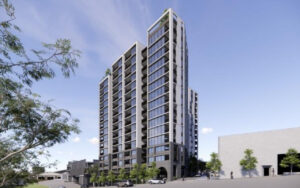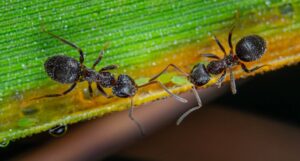Demographic change threatens Dutch survival
Much like any White nation, the Netherlands faces a tidal wave of demographic change that sweeps over its cities, towns, and villages. A wave that rapidly transforms life beyond recognition for the native White population. The Dutch (and Frisians) face a serious challenge in dealing with this radical demographic change, though reversal is not impossible.
Much like the French, Germans, and Americans, the new neighbours that the Dutch have been told they must “tolerate” are overwhelmingly recent arrivals. Comparatively few hold Dutch citizenship, many are poorly integrated, and third-generation immigrants of non-European origin are rare. Repatriation, the denaturalisation of dual citizens, the cancellation of visas, and the deportation of illegals would massively reverse the demographic damage that has been done to the Netherlands.
The current situation:
As with previous pieces, White Papers will utilise official data collected by national statistics agencies, universities, and other credible institutions. Statistics Netherlands (Centraal Bureau voor de Statistiek) reports that 4.4 million people in the Netherlands have a 1st or 2nd generation migrant background, with a total population of 17.6 million people in 2022.
Statistics Netherlands then goes on to break down these groups, stating that 2.5 million people in the Netherlands have a “non-Western” background, though their classification of which groups are non-Western is unusual. For historical reasons, Indonesians are counted as “Western”, as are the Japanese. If we properly classify these non-White groups into the “non-Western” category we can more accurately see that just about 2.86 million non-White migrants of the 1st and 2nd generation live in the Netherlands, making up 16.25% of the population.

This is far from the full story, however. Third-generation migrants, those who were born to the children of original immigrants, are a small but growing part of the Dutch population and must be mentioned. While the Dutch government classifies third-generation migrants as “Dutch” in the same way it would an ethnic Dutchman, it rather helpfully still goes through the process of tracking this population of individuals.
The Dutch government indicates that there are 859,000 third-generation immigrants in the country, 120,000 of whom have a “non-Western” background. Many of the hundreds of thousands of Turks, Moroccans, Surinamese, and others who live in the Netherlands arrived in the 1970s-1990s and therefore are only just finishing raising their (2nd generation) children. Those 2nd generation immigrants, overwhelmingly in their late 20s and early 30s, are only just now beginning to have children.
As such 75% of the third-generation “non-Western” population is below the age of 18 and is only just beginning to emerge as a serious demographic group, though there is one exception to this.
There are several hundred thousand third-generation Indo-Dutch persons in the Netherlands, but the exact numbers of these persons are impossible to find as the Dutch state does not collect statistics on them. Some of these individuals are entirely Indonesian by descent, others are half, and many are less than 1/5th Indonesian. Having grandparents or even great-grandparents who migrated to the Netherlands who already had an admixture of part Dutch part Asian.
White Papers is not going to adjudicate the “Whiteness” or “Dutchness” of a group that is ill-defined and numerically unknown. Only the Dutch nation can make such a decision.
Much the same as in other White nations, the non-White immigrants and their descendants in the Netherlands are crowded into and around the country’s major cities. 40% of the population of Rotterdam is non-White, while both the Hague and Amsterdam have 35% non-White populations which are rapidly growing.
These populations, being so heavily concentrated in the major cities of government, commerce, and tourism, are going to make it seem like the already large non-White population is larger than it really is. Though none of this is to say it is small.
The Netherlands, a country of roughly 12.2 million ethnic Dutch(and Frisians) hosts over 3 million non-White racial foreigners, making up roughly 18% of the population.
In total roughly 32% of the population of the Netherlands has a foreign ethnic origin once White non-Dutch are included.

This demographic transformation has thrown the Dutch into one of the most severe housing crises on the continent. The population is growing so rapidly that the already struggling health system will take up one-quarter of Dutch employment by the year 2040. Public transportation has become too dangerous for the Dutch to utilise in many migrant-heavy areas, and is it any wonder when migrants themselves brag to the media about brandishing knives?
This demographic shift in the Netherlands has such problems that the native Dutch are relocating in droves. Roughly 460,000 Dutch live in other European Union countries. Another 70,000 Dutch have relocated to the United States and a further 100,000 plus have relocated to Canada, the United Kingdom, and Australia.
The non-White criminals have become so brazen as to threaten the country’s future monarch, forcing H.R.H Crown Princess Catharina-Amalia to drop out of university in her own country and relocate to Spain to continue her studies.
Most concerningly for the Netherlands, and exemplified in the person of H.R.H Crown Princess Catharina-Amalia, is the fact that most of these emigrants are young. 59% of the native Dutch who have departed the country are under the age of 30.
This native flight from the Netherlands has created a severe brain drain, according to the University of Groningen. Large gaps have emerged in the Dutch labor market which non-White immigrants are unable to fill.
And it is no wonder? When a longitudinal study by the University of Amsterdam found that all post-1995 immigration has had a net negative budgetary effect of some €400 billion on the Dutch state. This figure represents 73.6% of the Netherlands’s current national debt of some €543 billion.
These numbers may seem daunting, but much as we have outlined with America, France, and Australia, the Dutch have a litany of relatively simple policy options that they could use to reverse the demographic transition of their nation.
Policy Options:
The first step is the cancellation of visas for some of the 1.422 million non-citizens resident in the country. Roughly 751,000 of these residents have their origins in a non-White country and the cancellation of their visas is a simple administrative action.
Additionally, the vast bulk of the 1.3 million dual citizenship holders in the Netherlands are non-White, half are Turkish and Moroccan alone.
It is entirely acceptable within international law to revoke the citizenship of dual nationals, as they will retain their original nationality and right to reside in their ethnic homeland. Current Dutch nationality law allows the Dutch authorities to denaturalize those who have committed fraud to gain access to the country, and immigration fraud is widespread in Europe.
In the Netherlands, the number of fake identity documents used by immigrants is reaching all-time highs, while scam marriage and paternity networks operate across European borders and have led to the naturalization of hundreds of thousands of immigrants who should never have been admitted to the continent.
Dutch nationality law also allows the denaturalization of any person who has been “convicted of an offense against the interests or security of the Koninkrijk der Nederlanden (Kingdom of the Netherlands)”. Dutch nationality law is unique in that it allows the country to go as far as making people stateless when denaturalising them.
This law could apply to tens and potentially hundreds of thousands of Moroccans, Turks, and Surinamenes descended individuals in the Netherlands who have committed crimes in their youth and adulthood. In some Moroccan neighborhoods, the youth crime rate was once 50%, and many families participated in sheltering members of the Moroccan mafia.

The number of non-White individuals who could be deported under these laws exceeds some 700,000 people. This brings the total number of repatriations possible under current Dutch law to more than 1.45 million, though it is likely this is an underestimate.
In addition to these first-generation immigrant repatriations, there are also those Netherlands-born non-Whites who will have to depart with their immigrant parents.
There are roughly 790,000 second-generation non-White immigrants in the Netherlands who were born to two foreign-born parents. These children and adults would be subject to departing with their parents. In the first case, those under 18 cannot be left without proper parental care, and in the second case because those children born to immigrants who had no place in the Netherlands in the first place could be subject to denaturalisation themselves.
Additionally, because intermarriage between the native Dutch and non-Whites is so rare there are a further 550,000 individuals of second-generation immigrant status who were born to two non-White parents, despite the fact that one held Dutch nationality. Many of these individuals will be criminally active Moroccans, Turks, Iraqis, and others who can, under current law, be denaturalised in the country.
The above two categories bring the potential number of repatriates up to roughly 2.79 million individuals. This repatriation would reduce the non-White population of the Netherlands from just over three million to barely 300,000. The remaining non-Whites would be overwhelmingly second and third-generation immigrants who are well-integrated and whose parents arrived in the country through only the most strictly legal means.
This repatriation, if carried out to the maximum extent possible, would reduce the population of the Netherlands from 17.9 million to roughly 15.11 million, and increase the native Dutch share of the population to roughly 80.5%, a 12.5-point increase on the current 68% share the Dutch hold today.
Conclusion:
The Dutch have been electing increasingly right-wing governments, as demonstrated by the recent electoral dominance of the PVV and BBB. As the Dutch explore their political alternatives to the current order an informed debate about their national demographic situation, its consequences, and the very possible policies to reverse that situation could serve to drastically alter the future of the country.
Je Maintiendrai
This article originally appeared on White Papers, and is published by The Noticer with permission. Follow the White Papers Policy Institute on Telegram here.






















